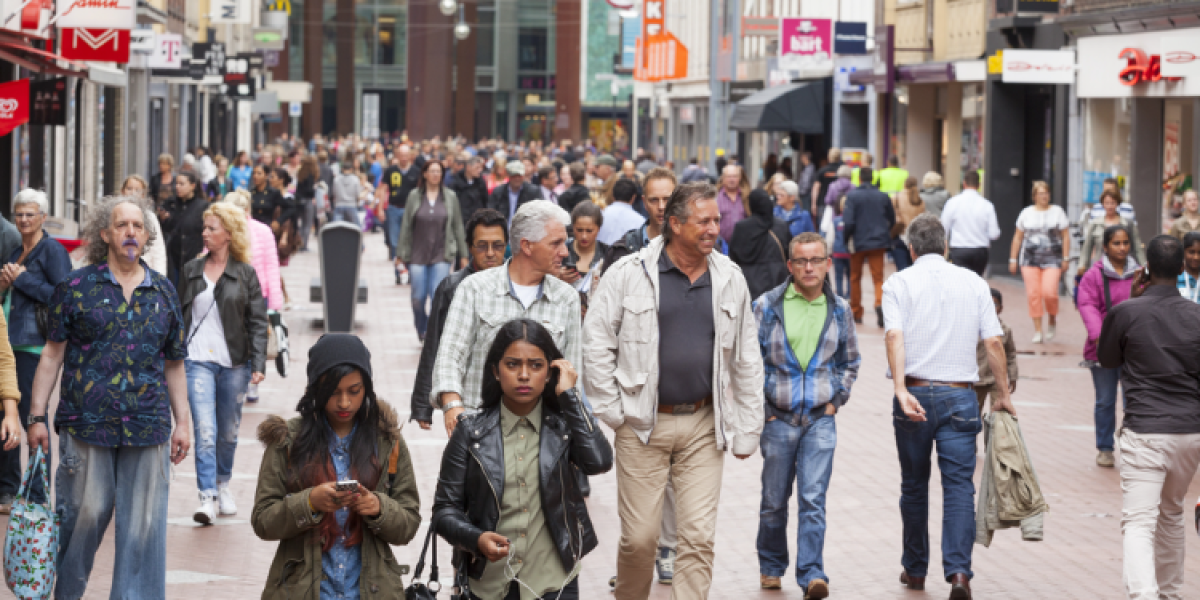
The Netherlands' population grew by over 250,000 in 2021, and this trend might be set to persist due to a rising number of non-EU immigrants. However, the Dutch government is looking to temporarily curb immigration, especially among asylum seekers, because it puts unsustainable pressure on this small country with limited housing.
Non-EU immigration has remained high despite the pandemic
Despite border closures and other disruptions caused by Covid-19, the number of immigrants from outside the European Economic Area (EEA) has remained high since 2019. According to the figures released by Statistics Netherlands (CBS), around 270,000 immigrants moved to the country in 2019, 220,000 in 2020 and 252,000 in 2021. The pandemic made immigration numbers go down by less than 100 thousand, and in any case, these numbers are quickly bouncing back to pre-pandemic levels.
A substantial percentage of these newcomers are highly-skilled migrants from India, China, Turkey, and the United States. Within the EU, many are from Poland. They are called “knowledge migrants,” which means that they obtained a work visa based on their specialized knowledge that can contribute to the Dutch economy. For instance, the majority of new migrants from India are IT professionals. Given their professional background, they tend to earn a lot when they settle in the Netherlands. Between 2013 and 2017, the median Dutch income was €34,000, while that of Indian knowledge migrants was €40,300.
The category of “knowledge migrant” is subject to some conditions. Firstly, these migrants need to be sponsored by a Dutch employer recognized by the Immigration and Naturalization Service (IND). They need to be paid a market-rate salary whose exact amount changes every year. For 2022, it is €4,840 per month for those over 30 and €3,549 for those under 30. The majority of knowledge migrants are fairly young and, according to the Dutch daily Trouw, about three-quarters are men. This might be explained by how the STEM (Science, technology, engineering, and mathematics) sector, under which many in-demand skills fall, is dominated by men.
A rising number of these high-skilled immigrants have also applied for citizenship. In 2020, the IND received 43,660 applications for citizenship, and this number rose sharply to 59,680 in 2021. Many are from Indian immigrants as well as Syrians and Eritreans (note: many Syrians in the Netherlands are refugees instead of economic migrants). Family reunification visas increased hand-in-hand with knowledge visas and citizenship. Indeed, according to CBS's statistics, family reunification is the second major category of visa applied for by Indians.
Dutch universities are struggling with the surge in international students
It's not only work visas that have seen an uptick in the country: student visas are also on the rise. Nuffic, a Dutch non-profit for international cooperation in education, has reported that international enrolment for the 2021-2022 academic year increased by 12%, reaching a record high of 115,0678 new international students. There was higher growth in postgraduate international enrolments than for bachelor's degrees.
The vast majority, or 72%, of these students, come from within the European Union (EU) and European Economic Area (EEA), especially from Germany, Italy, Romania, Belgium, Spain and France. The number of enrolments from British students has dropped drastically following Brexit, likely because British students can no longer benefit from lower EU tuition fees. However, the enrolment of Chinese, Indian and American students has also increased substantially. For instance, there were more new students from China (5,300) than from France (4,294) or Spain (4,687) in 2021.
In early 2022, the Association of Universities of the Netherlands (VSNU) raised the alarm that there are too many new students. The VSNU says that an excessively large student body will exacerbate funding issues, overwork their academic and administrative staff, and reduce the quality of education. The association's president has appealed to the government to cap the number of seats and student visas granted to international students, especially for programs taught in English and for candidates outside the European Economic Area.
The Minister of Education, Robert Dijkgraaf, has responded that he understands the concerns of universities, but he hasn't taken any concrete measures yet. He stresses that it's unrealistic to take action before 2023-2024. In the meantime, the University of Amsterdam (UvA) has already acted independently by capping the number of international students for two programs – psychology and political science.
Many international students choose to live and work in the Netherlands after graduating. In a survey by Nuffic in late 2021, nearly 60% of respondents said that they're likely to look for work in the country after getting their diploma. The number was higher for non-EEA students than for European students. Statistics Netherlands shows that, on average, half of the international students are still in the country 1 year after graduating, and one-quarter are still there 5 years later. That section of students becomes part of the high-skilled immigrants in the economy.
The lack of housing for refugees and students
Even if it has an advanced economy and many universities, the Netherlands remains a very small country. It's only about 42,000 km² big, that is, about thirteen times smaller than France. It's very difficult for the country to find housing space for a growing population.
Surprisingly, the country is facing the threat of overpopulation when its natural population growth is negative. Negative population growth means that there are more deaths per year than births: in the first quarter of 2022, 43,100 people died, but only 40,300 were born. However, the constant influx of immigrants is keeping the population high. Driven by immigration, the country's net population has grown by one million over the last decade.
This migratory influx includes the previously mentioned high-skilled economic migrants, but they also include many refugees. Indeed, there are currently nearly 80,000 Ukrainian refugees in the Netherlands, all of whom, of course, arrived in 2022. There are also many from Afghanistan, especially since the Taliban retook control of the country, and Syria. Eurostat's data shows that there is a backlog of 30,000 pending asylum applications at Dutch immigration offices.
Dutch authorities are struggling to find adequate housing for all of these refugees. The Ministry of Justice and Security has revealed that nearly 60,000 refugees (from various countries) are still living in shelters or camps, even if many should have legally been provided with a proper house by now. Some cruise ships, hotels and churches have even been converted into shelters. Many refugee camps have become crowded and unsanitary, decry human rights organizations. Many unaccompanied minors are stuck there in limbo, and in September, a baby died under unclear circumstances at the Ter Apel refugee center.
The government has stated that it is currently “working to find 20,000 extra housing places for asylum seekers with a residence permit.” However, at the same time, it is trying to reduce the number of refugee arrivals in the country. It has been decided that family reunification will be suspended for refugees with a residence permit until they have found appropriate housing. If, after 15 months, they still don't have a place to stay, their families abroad can then be granted visas regardless of housing. However, the suspension of family reunification risks breaching the human rights rules of the European Union.
Student housing is also facing a shortage. The government has announced a National Student Housing Action Plan 2022-2030 to build 60,000 affordable student housing units by the end of the decade. These will be built in collaboration with universities, existing housing associations and private investors. It will include 37,500 flex homes – houses that can be customized for different functions – built in the first phase from 2022 to 2024.
While the Dutch government hasn't tried to limit international student enrolment and knowledge/skill-based migration yet, they might soon raise the eligibility criteria for the latter. The Minister for Housing and Spatial Planning, Hugo de Jonge, has said that high immigration can “disrupt society” and that they have to look carefully at what sectors are facing a shortage of workers and where they have to be more selective.



















